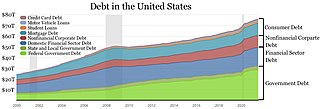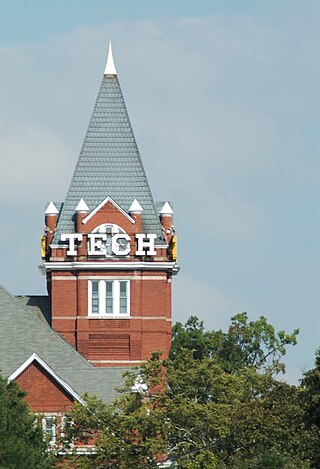| Department overview | |
|---|---|
| Formed | 1965 [1] |
| Jurisdiction | Minnesota |
| Headquarters | 1450 Energy Park Dr, Saint Paul, Minnesota |
| Department executive |
|
| Website | www |
The Minnesota Office of Higher Education is an executive branch agency that is responsible for the coordination of higher education information, financial aid programs, statistics, and policy in the U.S. state of Minnesota. [2] The agency does not run or administer the two public systems of higher education in Minnesota, the Minnesota State Colleges and Universities system or the University of Minnesota system.
In contrast to many other states, the Minnesota Office of Higher Education primarily functions as a policy and coordination role between the state's public, private non-profit and for-profit colleges and universities. [3] It is the designated state higher education executive office or SHEEO organization. [4] The agency also participates with the National Council for State Authorization Reciprocity or NC-SARA.
It also administers financial aid on behalf of the state with respect to state and federal student loans and aid. It also provides general counseling on student loans and finances to the public. [5] Annually it administers up to $150 million of state grants and the state loan program called SELF to students attending schools in Minnesota. [6]
The agency also provides research on higher education spending for the state legislature and advises the Minnesota Department of Veterans Affairs on the administration of the state and federal G.I. Bill. [7] In addition to these functions it also licenses higher education programs in Minnesota.
The agency has set a statewide policy goal of increasing the percent of Minnesota citizens to that have attained a collegiate certificate or degree to 70 percent by 2025. [8] It is also working to research ways of reducing structural barriers and achievement gaps for students of color, persons of low income, persons with disabilities and other groups. In 2013, the state legislature passed the Minnesota Dream Act which allowed for undocumented students to be eligible for in-state tuition. The agency administers the funding and determines eligibility for the dream act and for Deferred Action for Childhood Arrival students. [9]
Tuition payments, usually known as tuition in American English and as tuition fees in Commonwealth English, are fees charged by education institutions for instruction or other services. Besides public spending, private spending via tuition payments are the largest revenue sources for education institutions in some countries. In most developed countries, especially countries in Scandinavia and Continental Europe, there are no or only nominal tuition fees for all forms of education, including university and other higher education.
The Free Application for Federal Student Aid (FAFSA) is a form completed by current and prospective college students in the United States to determine their eligibility for student financial aid.
The Art Institutes (AI) were a private for-profit system of art schools in the United States.
Student financial aid in the United States is funding that is available exclusively to students attending a post-secondary educational institution in the United States. This funding is used to assist in covering the many costs incurred in the pursuit of post-secondary education. Financial aid is available from federal and state governments, educational institutions, and private organizations. It can be awarded in the form of grants, loans, work-study, and scholarships. In order to apply for federal financial aid, students must first complete the Free Application for Federal Student Aid (FAFSA).

The Development, Relief, and Education for Alien Minors Act, known as the DREAM Act, is a United States legislative proposal to grant temporary conditional residency, with the right to work, to undocumented immigrants who entered the United States as minors—and, if they later satisfy further qualifications, they would attain permanent residency.
EdFund is the United States' second largest provider of student loan guarantee services under the Federal Family Education Loan Program (FFELP). It is organized as a non-profit public-benefit corporation. EdFund offers students and their families a wide range of information on the value of higher education, how to pursue it, how to pay for it, and debt management. In addition, EdFund supports schools with advanced loan processing solutions and default prevention techniques.
A Pell Grant is a subsidy the U.S. federal government provides for students who need it to pay for college. Federal Pell Grants are limited to students with exceptional financial need, who have not earned their first bachelor's degree, or who are enrolled in certain post-baccalaureate programs, through participating institutions. Originally known as a Basic Educational Opportunity Grant, it was renamed in 1980 in honor of Democratic U.S. Senator Claiborne Pell of Rhode Island. A Pell Grant is generally considered the foundation of a student's financial aid package, to which other forms of aid are added. The Federal Pell Grant program is administered by the United States Department of Education, which determines the student's financial need and through it, the student's Pell eligibility. The U.S. Department of Education uses a standard formula to evaluate financial information reported on the Free Application for Federal Student Aid (FAFSA) for determining the student's Expected Family Contribution (EFC).

The Council for Higher Education Accreditation (CHEA) is a United States organization of degree-granting colleges and universities. It identifies its purpose as providing national advocacy for academic quality through accreditation in order to certify the quality of higher education accrediting organizations, including regional, faith-based, private, career, and programmatic accrediting organizations.
The Oregon Office of Degree Authorization (ODA) is a unit of the Office of Student Access and Completion, with responsibilities related to maintaining high standards in private higher education institutions in Oregon. ODA administers laws and provides oversight of private colleges and universities offering degree programs in the state, validates individual claims of degrees, enforces the closure of substandard or fraudulent higher education programs in the state, and enforces policy for publicly funded postsecondary programs and locations. It was formerly a unit of the Oregon Student Access Commission (OSAC), which became Oregon Student Assistance Commission prior to January 1, 2012. Its functions moved to the Oregon Higher Education Coordinating Commission as part of the Office of Student Access and Completion in July 2012.

The Higher Education Act of 1965 (HEA) was legislation signed into United States law on November 8, 1965, as part of President Lyndon Johnson's Great Society domestic agenda. Johnson chose Texas State University, his alma mater, as the signing site. The law was intended "to strengthen the educational resources of our colleges and universities and to provide financial assistance for students in postsecondary and higher education". It increased federal money given to universities, created scholarships, gave low-interest loans for students, and established a National Teachers Corps. The "financial assistance for students" is covered in Title IV of the HEA.
Argosy University was a Private university with campuses throughout the United States owned by Dream Center Education Holdings (DCEH), LLC and Education Management Corporation.

In the United States, student loans are a form of financial aid intended to help students access higher education. In 2018, 70 percent of higher education graduates had used loans to cover some or all of their expenses. With notable exceptions, student loans must be repaid, in contrast to other forms of financial aid such as scholarships, which are not repaid, and grants, which rarely have to be repaid. Student loans may be discharged through bankruptcy, but this is difficult. Research shows that access to student loans increases credit-constrained students' degree completion, later-life earnings, and student loan repayment while having no impact on overall debt.

Scholarship America is a Minnesota-based American philanthropic organization that assists communities, corporations, foundations and individuals with fundraising, managing and awarding scholarships to students. The organization designs, administers and manages corporate and foundation scholarship programs; it also operates Dollars for Scholars, a coalition of local scholarship organizations in communities across the United States.

Education consists of public and private schools in the U.S. state of Georgia, including the University System of Georgia, Technical College System of Georgia, private colleges, and secondary and primary schools.
The California DREAMAct is a package of California state laws that allow children who were brought into the US under the age of 16 without proper visas/immigration documentation who have attended school on a regular basis and otherwise meet in-state tuition and GPA requirements to apply for student financial aid benefits. It and past similarly named legislation have been authored by California State Senator Gil Cedillo.
The North Carolina Community College System (NCCCS) is the governing body for North Carolina's 58 public community colleges and has been empowered by the state of North Carolina to "adopt all policies, regulations and standards it may deem necessary for operation of the System" by the North Carolina General Assembly. On March 19, 2010, the State Board of Community Colleges approved policy 23 N.C.A.C. 02C .0301 entitled "Admission to Colleges". The State Board has been researching and amending the policy for a decade now and it was implemented on July 10, 2010, after completing the full amendment process. The Admission to Colleges policy states "undocumented immigrants can enter the system's 58 community colleges if they are a graduate of a United States high school, pay out-of-state tuition, and do not displace a North Carolina or United States citizen"
Undocumented youth in the United States are young people living in the United States without U.S. citizenship or other legal immigration status. An estimated 1.1 million undocumented minors resided in the U.S. as of 2010, making up 16% of the undocumented population of 11 million. Undocumented students face unique legal uncertainties and limitations within the United States educational system. They are sometimes called the 1.5 generation, as they have spent a majority of their lives in the United States.
For-profit higher education in the United States refers to the commercialization and privatization of American higher education institutions. For-profit colleges have been the most recognizable for-profit institutions, and more recently with online program managers, but commercialization has been a part of US higher education for centuries. Privatization of public institutions has been increasing since at least the 1980s.
Educational Credit Management Corporation (ECMC) is a United States nonprofit corporation based in Minnesota. Since 1994, ECMC has operated in the areas of student loan bankruptcy management and loan collection. ECMC is one of a number of guaranty agencies that oversee student loans for the United States Department of Education. As a guarantor working on behalf of the U.S. Department of Education, ECMC charges fees to debtors and earns commissions from taxpayers by collecting on defaulted student loans pursuant to the Higher Education Act. In return, the U.S. government has retrieved billions of dollars from student loan debtors. From 1994 to 2015, according to ECMC, they returned $4.3 billion to the U.S. Treasury.
Higher education in the United States is an optional stage of formal learning following secondary education. Higher education, also referred to as post-secondary education, third-stage, third-level, or tertiary education occurs most commonly at one of the 3,899 Title IV degree-granting institutions in the country. These may be public universities, private universities, liberal arts colleges, community colleges, or for-profit colleges. Learning environments vary greatly depending on not only the type of institution, but also the different goals implemented by the relevant county and state.